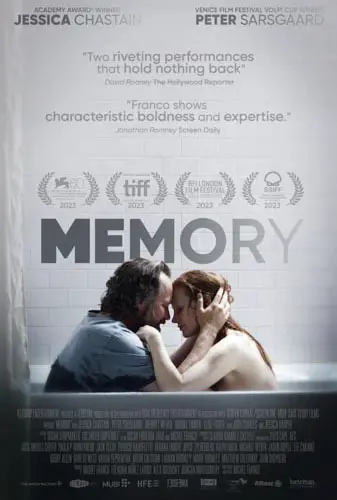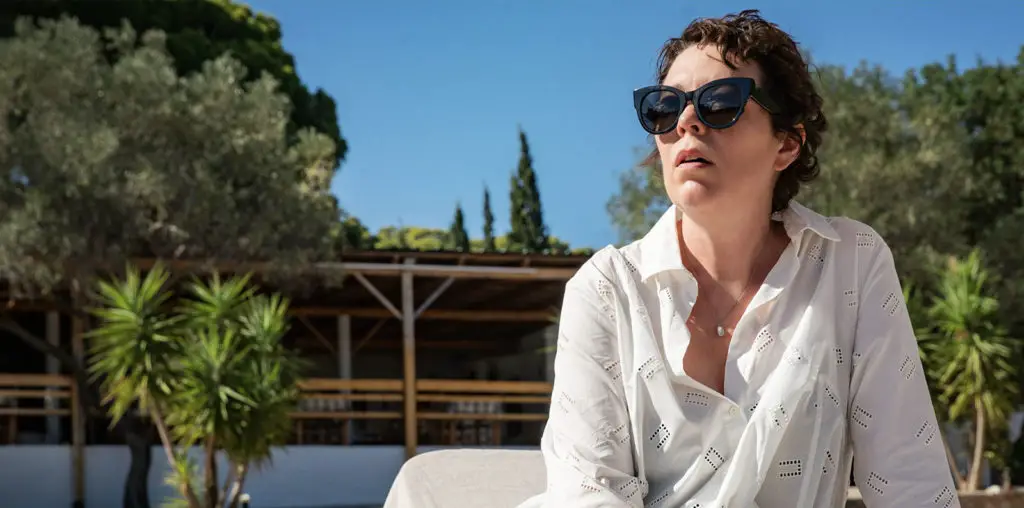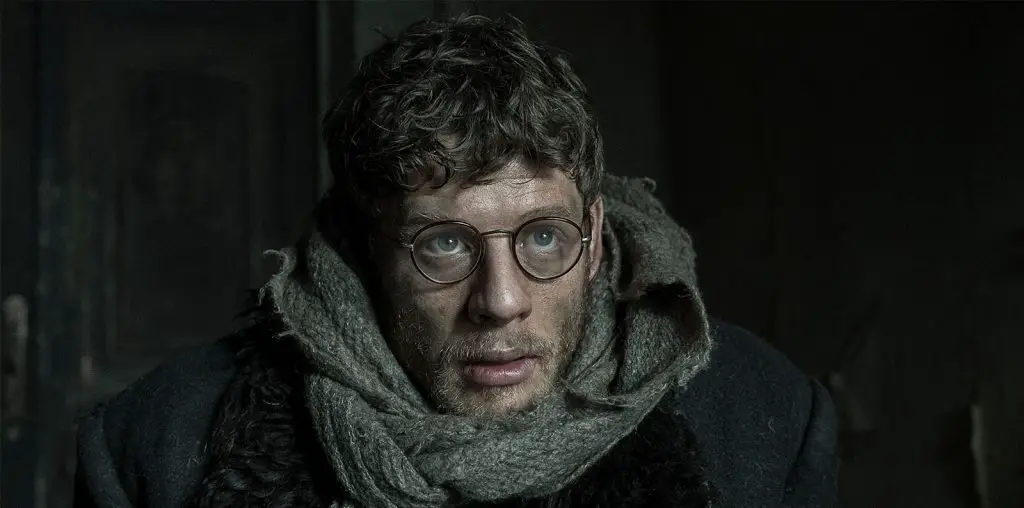
Sarsgaard gives a mesmerizing portrayal. His discombobulation becomes ours. When dealing with other characters, his mental state plays havoc with the wavelengths of human communication. Confronted with some truly shocking accusations, he just looks confused. His responses to most conversations are shrugs, nods, huhs, and pauses. Or, saddest of all, requesting permission to write down what’s been said to him that’s important, lest he forget. The rest of the time, it appears he is a bright, warm, and sentimental type, being wiped out by disease.
Any past the two might share is a mystery. For the first half, Memory seems to have the DNA of a suspense movie, making light entertainment hay with some truly squeamish material to the point where it threatens to become a domestic thriller in the vein of Sleeping With the Enemy. Saul may just be a profoundly evil and dangerous man, using his illness as cover. The narrative that emerges seems doubly unreliable, whether due to Sylvia’s jumpy and wounded nature or the often sphinx-like puzzlement of Saul. We don’t know quite where we stand, but it feels like a dangerous place, and we care about the people there.

“…seems to have the DNA of a suspense movie…”
There are bum notes. How does anyone now have a giant apartment in New York, especially a lowly health worker like Sylvia? In fact, the New York setting felt at odds with the story. The film may have been enriched further by a more provincial setting, with the twitch of curtains and the snapping shut of minds to the odd and ungainly duo as additional pressures. The New York setting, with its iconic brownstones, reminds you of other films this has little in common with otherwise, introducing a sense of cliche to otherwise fresh material.
The star is perhaps Michel Franco. Both writer and director, his control over the material doesn’t let up, with the drama threaded beautifully through the production design of Claudio Ramirez Castelli. The sets by Denise Pascal make the plot real and solid, with objects like board games providing a nice commentary on the characters. We see a starchy family game of Monopoly, contrasted in the very next scene with the challenged Saul having way more fun playing Guess Who? A stack of tires piled up outside the garage beneath Sylvia’s apartment is used as a wonderfully unnatural, oily backdrop for a troubled phone call. It is a tribute to the talents of Franco and his cinematographer, Yves Cape, that these elements join the chorus of voices on screen. The world they live in feels alive. It encroaches in the same way that the present keeps encroaching upon and challenging the memories of Sylvia and Saul.
Memory is a misnomer, of course. The whole film is an elegant inquiry into what happens when memory fails or when it just hurts so much it’s easier to try and forget. This portrait of broken people doing their best is an oblique and beautiful thing.

"…oblique and beautiful..."


